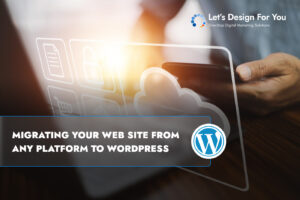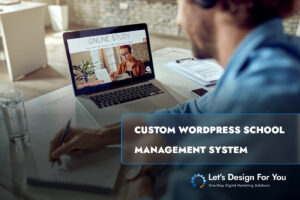Posted by: Coyote Manager
User event tracking can be beneficial for you too if you are tracking the right things. Tracking user events on your website and better understanding how to take this information to better optimize your website can lead to higher click-through rates and even overall conversions site-wide. In this article, we will cover some events that other developers use and track to better optimize their own websites.
User Event Tracking – What can be tracked at Google Analytics?
1. Clicks
There can be a lot of insight when tracking what users click and interact with on your website. Whether it’s your Call To Action buttons, design, or video elements; all clicks can help you improve your website.
When a user interacts with an element via a click, this can be registered as an event. You want to be able to analyze this information to see if the content on your site may need optimization to increase click through rates.
For example, if users are scrolling past your Call To Action button, you can take this data to come up with something new or even change the location or color. Being able to optimize different content on your site and making tweaks to ensure the best results is key to a successful conversion. We can do user event tracking to know the behavior of the user.
2. Video Play, Pause, View to End
Do you ever wonder if users actually watch the content on your website? If you have a video on your website, it’s important to know how users are interacting with this element.
Are they watching it, simply skipping past it, or pausing 10 seconds in? These events can be tracked which help understand how visitors interact with your video content so you can better optimize the thumbnail, title or even change the content altogether depending on; how long they watch, when they lose interest – you can retarget them based on views/view completions and you can get ideas around what content is driving the most engagement and produce similar types of content on your other pages as well.
We can see their behavior through user event tracking.
3. Scroll Tracking
Tracking the user’s scroll activity can be extremely useful and can tell you a lot about the design of your web page and the content on your page. Howso? Scroll tracking sets breakpoints based on the page height and fires triggers when visitors scroll through and hit a certain percentage of a page: 10%, 25%, 50%, etc.
Scroll tracking is directly related to conversion optimization too. If your Call To Action is closer to the bottom of your page, but only a small number of visitors are scrolling past 50% of your page, you may want to move your Call to Action up to receive better results.
4. Add To Cart
This is a must for brands selling products or services online to use user event tracking. Having such information, you can segment visitors to people who are adding stuff to the cart but not checking out, or people who are viewing products but not adding them to the cart. If you have the Facebook pixel with event code on your checkout pages, you can also retarget these audiences with similar products on Facebook.
5. Abandoned Cart
Many users add items to the cart but fail to complete the purchase. This can happen due to distractions or simply to check the total price. Understanding these behaviors is crucial for creating effective strategies to recover sales.
With this data in mind, creating a pipeline to convert these users can be very powerful. For more insights on how to effectively tackle abandoned carts, see what Mailchimp describes about Abandoned Cart strategies.
This is powerful because understanding why people are not completing purchases. the area where users stop can be optimized to lower users abandoning their cart. This can be done by implementing user event tracking.
Is there an issue in the check-out process or are you asking for too much information? Shipping and handling costs too high? You can also use data from cart abandonments to reach out to these potential customers and re-engage with them.
6. Buying Event
Analyzing the process users take to completing and making a purchase can be very valuable information when making improvements. By tracking those who complete the sale, you can look at their user journey from start to checking out to design content/pages and user flows that make the user experience simple. Making the purchasing experience easy for a user can increase sales and deliver the best outcome for your website. Tracking buying events and collecting data about those users allowing you to target a specific demographic.
To learn more about “What Is Event Tracking & How Can It Help You?” Click on the link to be directed to our article which talks more about Event Tracking.
Final note –
User event tracking is used to track the user flow on the website and their behavior. Hope we have covered everything, if you still have any questions, please reach out through comments.



